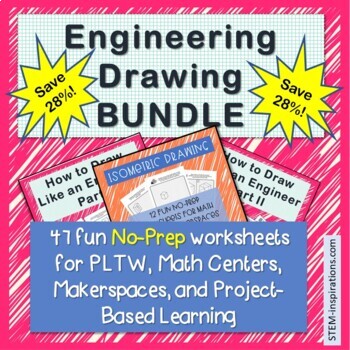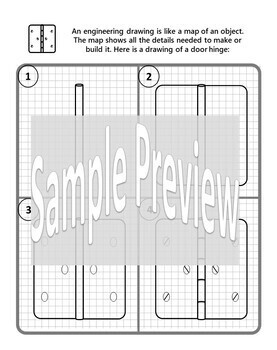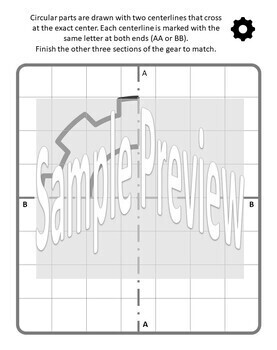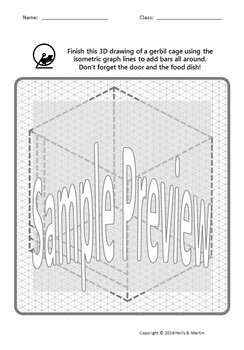BUNDLE - No-Prep Worksheets - How to Draw like an Engineer and Isometric Drawing
- Zip
What educators are saying
Products in this Bundle (3)
Description
This money-saving STEM Engineering project bundle combines all the easy, no-prep worksheets from 3 products.
Perfect for PLTW, Makerspaces, Project-Based Learning, Afterschool STEM or STEAM clubs, and much more.
NO MATH REQUIRED!
Engineering drawing is a universal language that can be understood all over the world!
Students can learn to think and draw like an engineer. These worksheets present the basic concepts and vocabulary of engineering drawing, sometimes called mechanical drafting.
Students also learn a simple way to create realistic, 3D drawings using isometric graph paper. They can then go on to sketch and draw their models and inventions for 3D printing projects.
These visualization and modeling skills will prepare students to use engineering design software CAD programs such as the ones from the National Council of Teachers of Mathematics, MorphiApp, Sketchup, Fusion360, or Tinkercad.
You may also like:
- Primary STEM workbook 3D Drawing K-3 Elementary STEAM Printable Art Robot
- 3D Isometric Drawing and Design for Middle School
- Isometric Drawing Worksheets for Middle School - Backyard Wildlife Habitat
- No-Prep 3D Isometric Christmas Designs for Engineering, Math Centers, or PBL
- No-Prep 3D Isometric Valentine Designs for Pre-Engineering, STEM, or PLTW
For updates on more products like these, please click to follow my store. Thank you!





